Book of Abstracts SCORE CIMSA INDONESIA


July 2024–May 2025 Edition





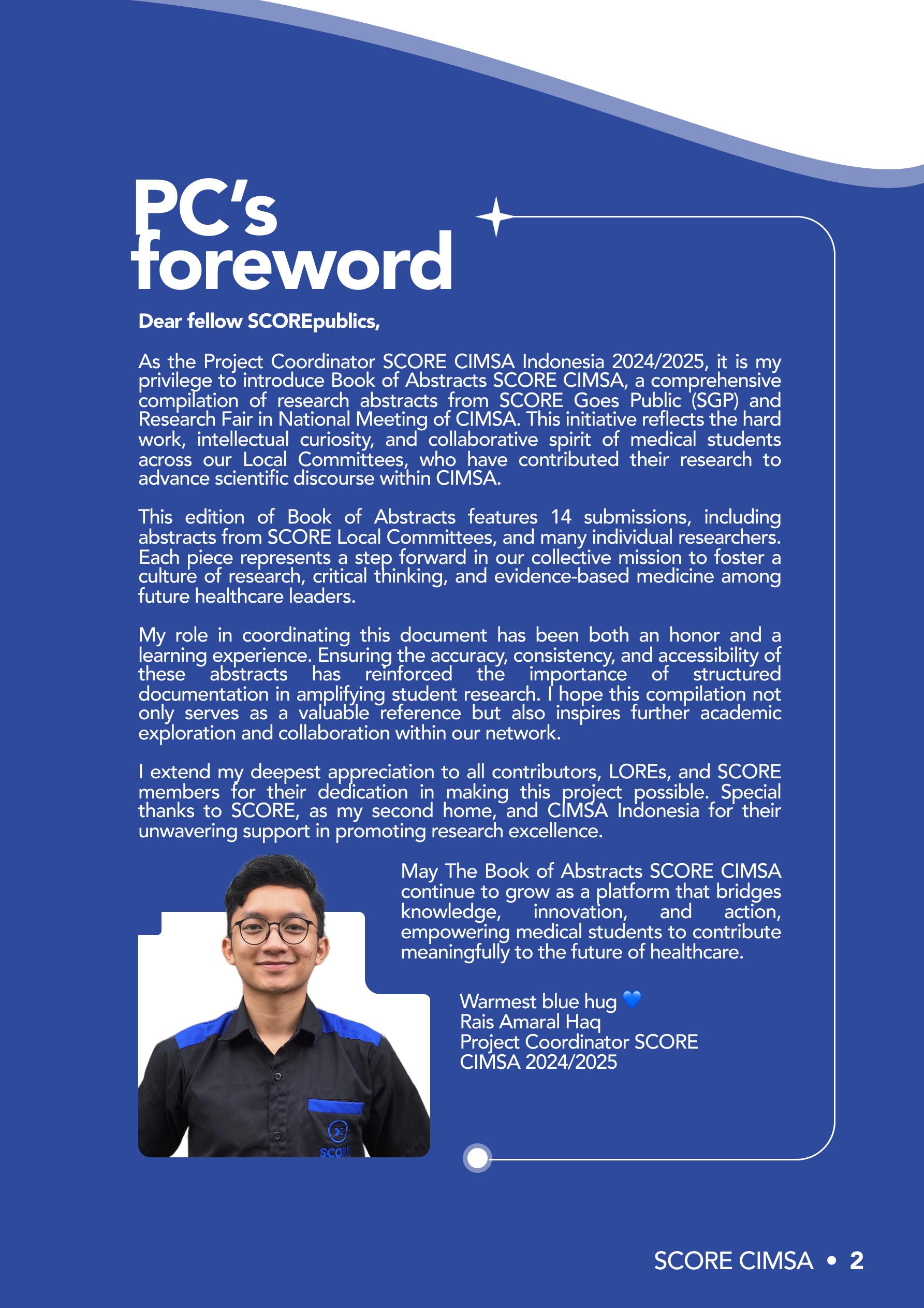













July 2024–May 2025 Edition
















The Efficacy of Triple Artemisinin-Based Combination Therapy (TACT) in Comparison to Artemisinin-Based Combination Therapy (ACT) for Uncomplicated Malaria:
Masagung Akprillia G, Nisrin Husni, Shabrina Amrina R, Nakeisha Wijaya, Shafa
Salsabila KK, Reva Yunia, Amalia Putri Z, Philipus Rai D K
1 Medical
Study Program, Faculty of Medicine, Universitas Airlangga, Indonesia

Malaria is a mosquito-borne infectious disease with a prevalence of 263 million cases in 83 countries worldwide in 2023. Furthermore, Indonesia accounts for 15.6% of the regions reported cases and 22% of malaria deaths. The first line treatment for malaria is Artemisinin-based Combination Therapy (ACT), yet drug resistance towards ACTs has been found in several regions, resulting in ineffective treatment of malaria. This challenge has spurred research into new therapies, including Triple Artemisinin-based Combination Therapy (TACT). The addition of a partner drug to ACT may be effective to treat uncomplicated falciparum malaria cases with drug resistance, as well as preventing multidrug- resistance. This review evaluates the efficacy of TACT compared to ACT with 42 day PCR-corrected efficacy as the outcome.

The studies included were retrieved from four databases: Pubmed, Google Scholar, Scopus, and ScienceDirect. Screening involved is done by applying inclusion and exclusion criteria. Inclusion criteria includes studies with uncomplicated malaria patients, intervention of Triple Artemisinin-based Combination Therapy, outcome of 42 day PCR-corrected efficacy, and randomized trial study design, while exclusion criteria includes language of the study besides english, non-artemisinin-based intervention drug, study designs aside from randomised trials, and studies with no full text available. The risk of bias is assessed using RoB Tool 2.0.

Among the four studies, TACT shows promising outcomes in terms of 42-day PCR corrected efficacy. Out of the seven outcomes, only one outcome shows a lower percentage of 42-day PCR corrected efficacy in the experimental group compared to the control group, with percentages of 91% and 100% respectively. The most prominent outcome is shown with the TACT treatment of Dihydroartemisinin-piperaquine plus mefloquine which is done in Vietnam, Thailand, Cambodia, and Myanmar. With a percentage increase of 48%, the TACT is shown to be effective to treat malaria in these regions. Side effects are also observed, with vomiting being significantly higher in patients treated with artelorane-piperaquine or TACTs involving amodiaquine, while headache and abdominal pain is similar between the intervention and control groups.
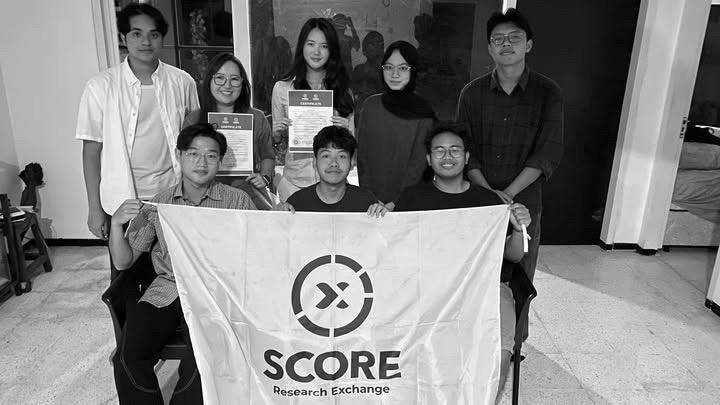
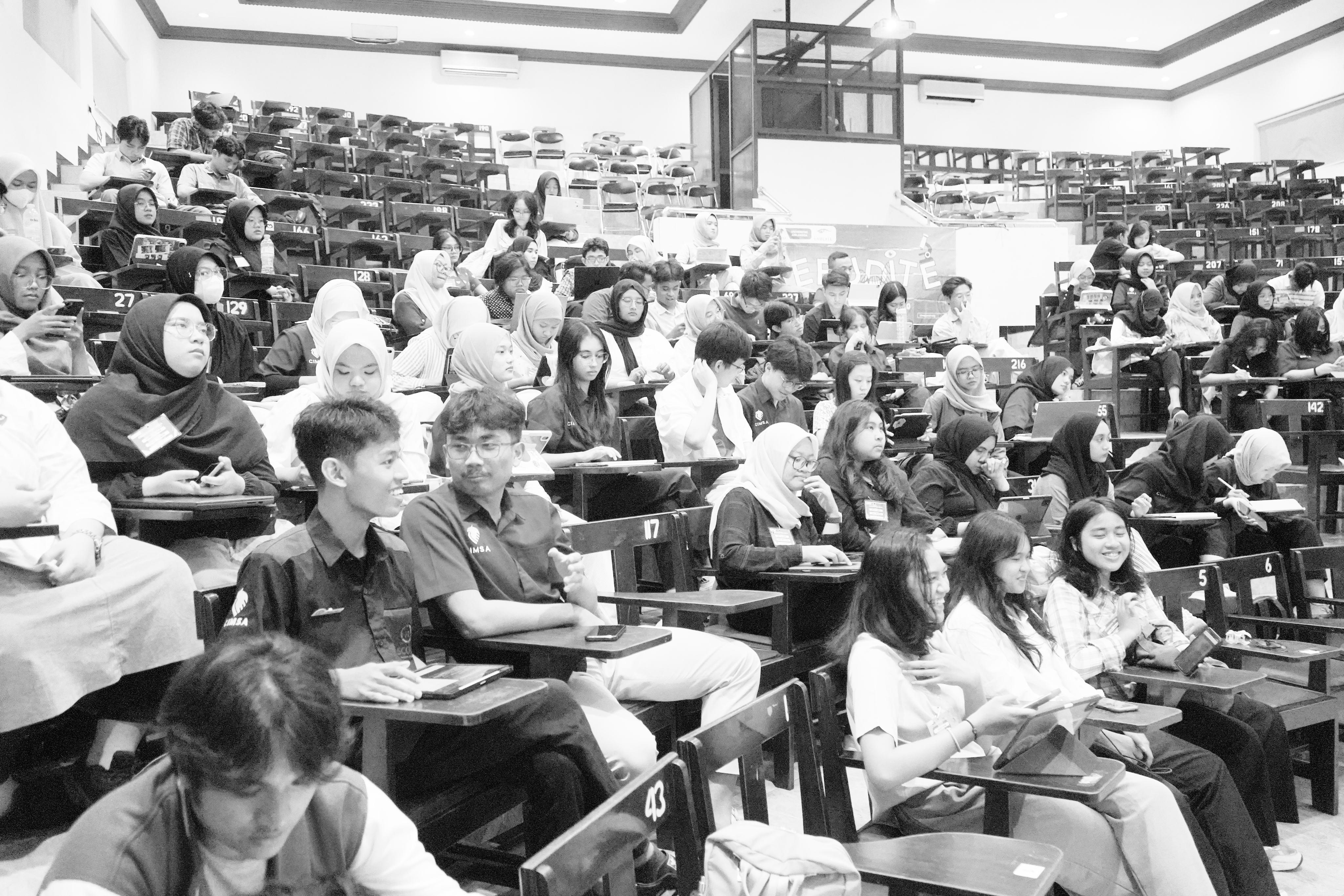

Overall, Triple Artemisinin-Based Combination Therapies (TACTs) are effective and safe for treating uncomplicated falciparum malaria, particularly in regions with multidrug-resistant parasites. The mutual protection of well-matched partner drugs extends the therapeutic life of antimalarial combinations, making TACTs a viable alternative to failing Artemisinin-Based Combination Therapies (ACTs).

KE YW ORDS
Malaria, Plasmodium falciparum, Artemisinin based Therapy (ACT), Triple Artemisinin based Therapy (TACT), Resistance, Systematic Review

Folinic acid and autism spectrum disorder in children: A systematic review and meta-analysis of two double-blind randomized placebo-controlled trials
Johanes Aprilius Falerio Kristijanto, Nur Khamidah, Fara Disa Durry, Farida Anggraini Soetedjo
1 Faculty of Medicine, Universitas Wijaya Kusuma Surabaya, Indonesia
2 Department of Public Health, Faculty of Medicine, Universitas Wijaya Kusuma Surabaya, Indonesia
3 Department of Public Health, Faculty of Medicine, Universitas Pembangunan Nasional Veteran Jawa Timur, Indonesia
4 Department of Internal Medicine, Faculty of Medicine, Universitas Wijaya Kusuma Surabaya, Indonesia

Folinic acid is a synthetic form of vitamin B9 that plays a crucial role in folate metabolism, including DNA and RNA synthesis and epigenetic methylation. These processes are essential for nervous system development. Research suggests that disruptions in folate metabolism contribute to the pathophysiology of autism spectrum disorder (ASD) through neurochemical and epigenetic dysregulation. The objective of this meta-analysis was to evaluate the effectiveness of folinic acid in reducing ASD symptoms.

Review Manager software was used to extract study characteristics and outcomes and perform statistical analysis. Searches were conducted in PubMed, Science Direct, and Cochrane databases using keywords: autism spectrum disorder, folinic acid, and randomized controlled trial. Only studies published in the last ten years (January 10, 2015 to January 10, 2025) were included. Randomized controlled trials (RCTs) meeting the inclusion criteria were selected, while observational studies and non-English articles were excluded. A fixed effects model was applied for mean difference analysis, as no heterogeneity was observed.

Two studies (n = 103 participants) evaluated the effects of folinic acid on reducing ASD symptoms. The symptoms were assessed using an aberrant behavioral checklist. The combined mean difference was -0.66, with 95% confidence intervals (CIs) of -1.22 to -0.10. The results showed statistical significance (p = 0.02). However, the analysis was based on only two studies with a small sample size and a modest mean difference.
Folinic acid administration may potentially mitigate ASD symptoms in children. However, further studies with larger sample sizes are needed to provide clinically meaningful generalizations.
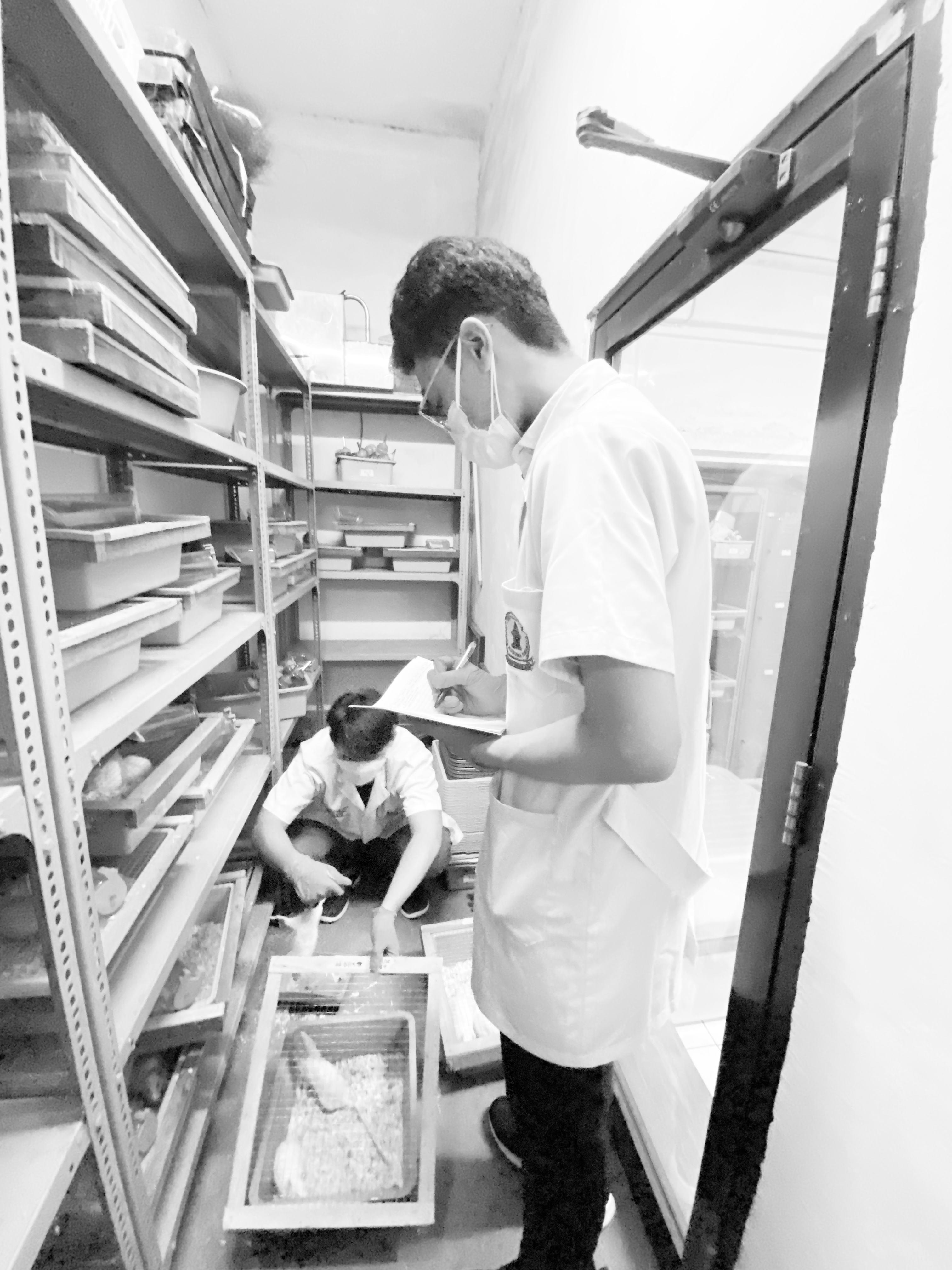
K E YW ORDS DHF, Papaya, Randomized Control Trials


Radithya Ikhsan Trinanda, Titania Sophia Qelmi, Ibrahim Hanif Rizkiliano
1
Medical Study Program, Faculty of Medicine, Universitas Airlangga, Indonesia

INTRODUCTION/BACKGROUND
CKD is ranked 12th as one of the main causes of death, with about 1.23 million deaths and estimated this figure will continue to rise. In addition, the risk of kidney disease has finally increased by 7% for each increase in 1 mg/dL of SUA levels compared to the baseline. Hyperuricemia as a risk factor and forecasting factor to detect CKD has generated anti gout drug treatment as an alternative method focusing on reducing SUA levels to reduce progression of CKD. This study aims to understand the comparative effect of antigout drugs (Allopurinol, Febuxostat and Topiroxostat) in the XOi to prevent CKD exacerbation in patients with hyperuricemia.

A systematic review was conducted using the Preferred Reporting Items for Systematic Reviews and Meta-Analyses (PRISMA) guidelines. References for the study were searched in databases such as PubMed, Scopus, ScienceDirect, Sage Journals, and other sources. Twelve studies were selected and analyzed to compare the effectiveness of interventions involving three drugs through outcomes of estimated glomerular filtration rate (eGFR) and uric acid levels in patients. The assessment of bias in randomized controlled trials was performed using the RoB 2.0 tool. The extracted data were then subjected to meta-analysis using RevMan 5.4.1 software.

Overall, according to the results of the forest plot, XOi class drugs have been shown to be able to significantly reduce the level of SUA and increased eGFR, that is -1.84 [95% CI -2.88, 0.79] at the level of SUA and 1.89 [95% CI 0.31, 2.25] in eGFR. When it divided into sub-groups, the results of the SUA levels after intervention have the greatest significance for the intervention of Febuxostat, specifically -2.58 [95% CI -3.03, -2,14] followed by Allopurinol and Topiroxostat. Furthermore, on the basis of the results on eGFR after intervention, Allopurinol has the greatest significance, that is 5.55 [95% CI 2.44, 8.66] followed by Febuxostat and Topiroxostat.
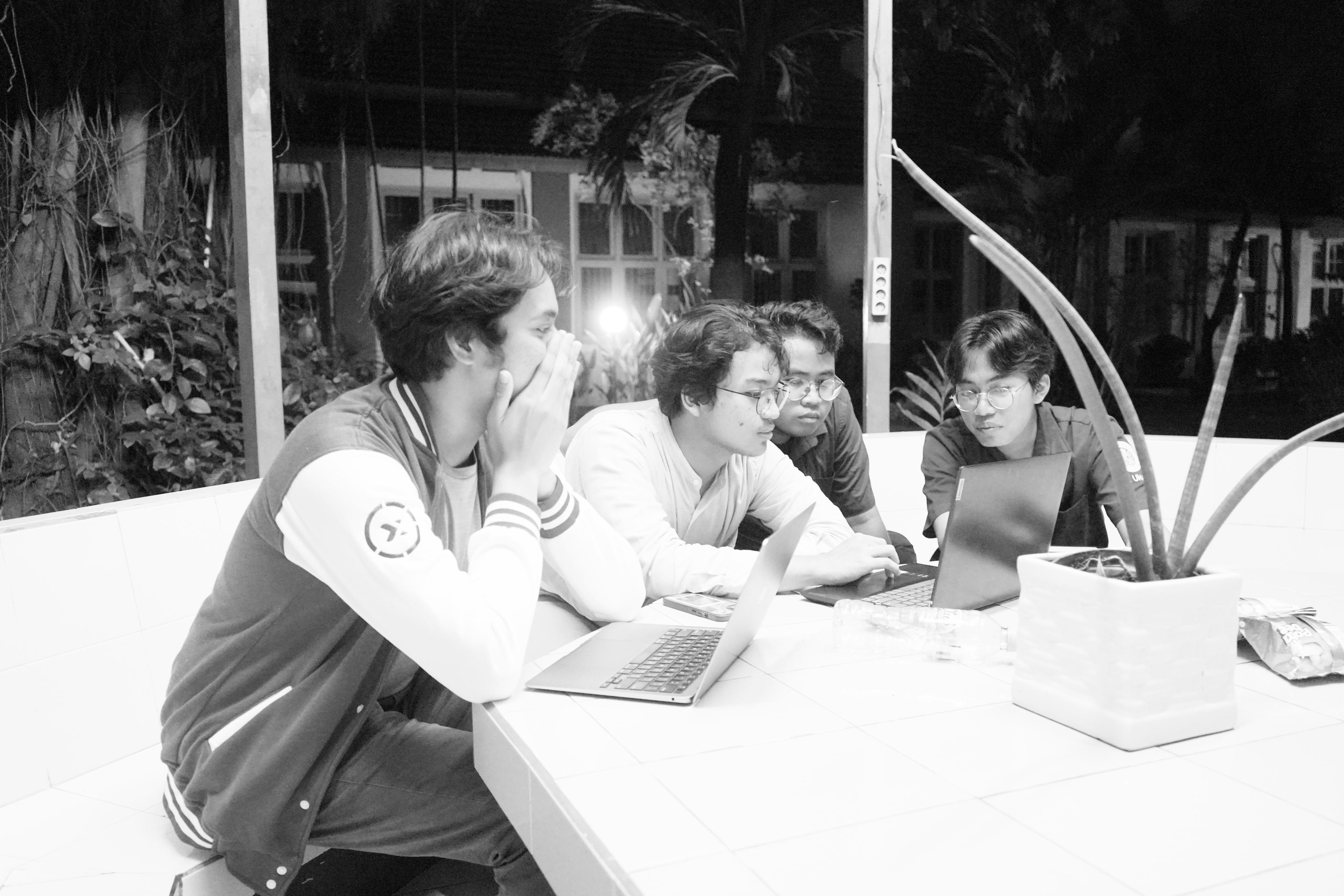

Based on the described data, Allopurinol is the best intervention to increase eGFR or slow down the decline of eGFR in CKD patients, then Topiroxostat and followed by Febuxostat. Moreover, Febuxostat is the best intervention option to reduce repair. However, this study has some limitations, such as high heterogeneity, high risk of bias in certain studies, a small number of primary studies and the need to extract data with data with some calculations due to different results of the study. Future research proposals include dividing data into subgroups to reduce heterogeneity, paying attention to research with strict protocols to reduce biases, and conducting more primary research.
KE YW ORDS
Allopurinol, Febuxostat, Topiroxostat, Chronic Kidney Disease, Hyperuricemia

Mikel Satria W, Firnanda Junizar, Adiva Sekar N, Muhammad Akhtar H, Asmah Binti Mohammed Y
Medical Study Program, Faculty of Medicine, Universitas Airlangga, Indonesia

The emergence of multidrug-resistant TB (MDR-TB), defined as resistance to at least isoniazid and rifampicin, the two most potent first-line anti-TB drugs, has further complicated eradication efforts. Understanding the relative strengths and limitations of these BPaLM and BPaMZ regimens could pave the way for more effective strategies to combat MDR-TB, ultimately contributing to global TB control efforts and reducing the burden of this deadly disease. These regimens have shown promise in clinical trials, but their comparative efficacy remains unexplored. This study aims to address this gap by evaluating the comparative efficacy of BPaLM and BPaMZ to advance therapeutic options for MDR-TB and improve patient outcomes.

This systematic review was conducted using the PRISMA flow chart on databases such as PubMed, Cochrane, and Scopus. We collected data on the 12th of December 2024 using the following boolean operator keywords: (TB OR Tuberculosis) AND (BPaLM OR Bedaquiline, Pretomanid, Linezolid, and Moxifloxacin OR BPaMZ OR Bedaquiline, Pretomanid, Moxifloxacin, and Pyrazinamide ). Before the literature search, inclusion and exclusion criteria were determined to ensure the literature analysed would be specific and relevant to the topic. The inclusion criteria include RCT or clinical trials, patients diagnosed with MDR-TB, and patients who received BPaLM or BPaMZ regimen treatments. However, our exclusion criteria include studies published longer than 5 years, studies done on animal models, and studies not in English or Indonesian. The screening process was conducted utilising rayyan.AI, and the risk of bias assessment was performed using the RoB 2.0 tool.

BPaMZ has demonstrated superior bactericidal activity compared to BPaLM), as evidenced by faster and higher culture conversion rates in clinical trials. By week 8 of treatment, 86% of patients in the BPaMZ group achieved culture-negative status, compared to 77% in the BPaLM group. However, the enhanced efficacy of BPaMZ comes with a higher incidence of severe adverse events, particularly hepatotoxicity. In contrast, only 8% of patients on BPaLM experienced early withdrawal or death by week 8. This highlights a significant trade-off between efficacy and tolerability, which must be carefully considered in clinical practice, underscoring the complexity of TB treatment. Despite the higher adverse event rates, BPaMZ demonstrated its potential for long-term effectiveness.
In conclusion, our study provides valuable insights into the comparative efficacy and safety of BPaLM and BPaMZ regimens in treating MDR-TB. While BPaMZ demonstrated faster and more effective culture conversion than BPaLM, it also showed a higher incidence of liver-related side effects and treatment discontinuations. Despite these risks, BPaMZ remained effective for long-term conditions. These findings underscore the need for a balanced approach in TB treatment, considering both efficacy and tolerability.
KE YW ORDS Tuberculosis, BPaLM, BPaMZ





STANDING COMMITTEE ON RESEARCH EXCHANGE CENTER FOR INDONESIAN MEDICAL STUDENTS’ ACTIVITIES